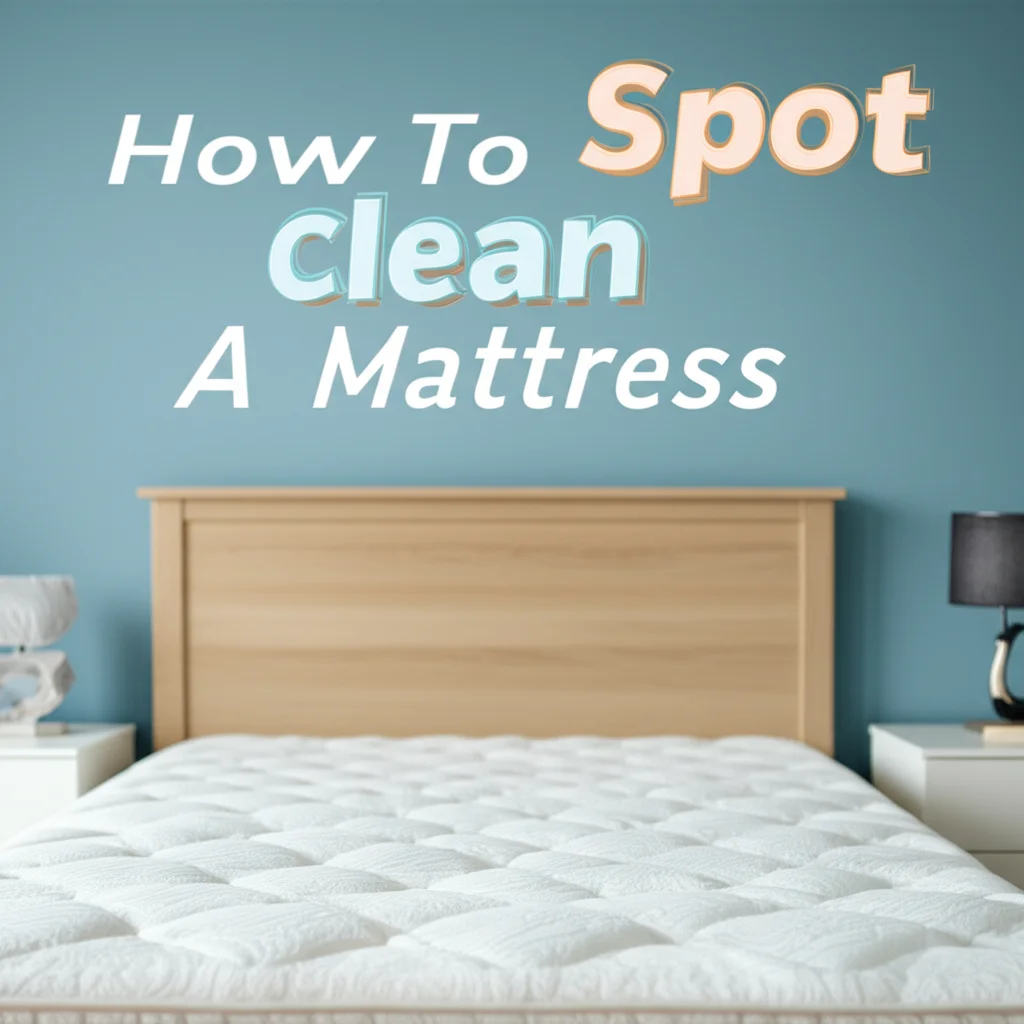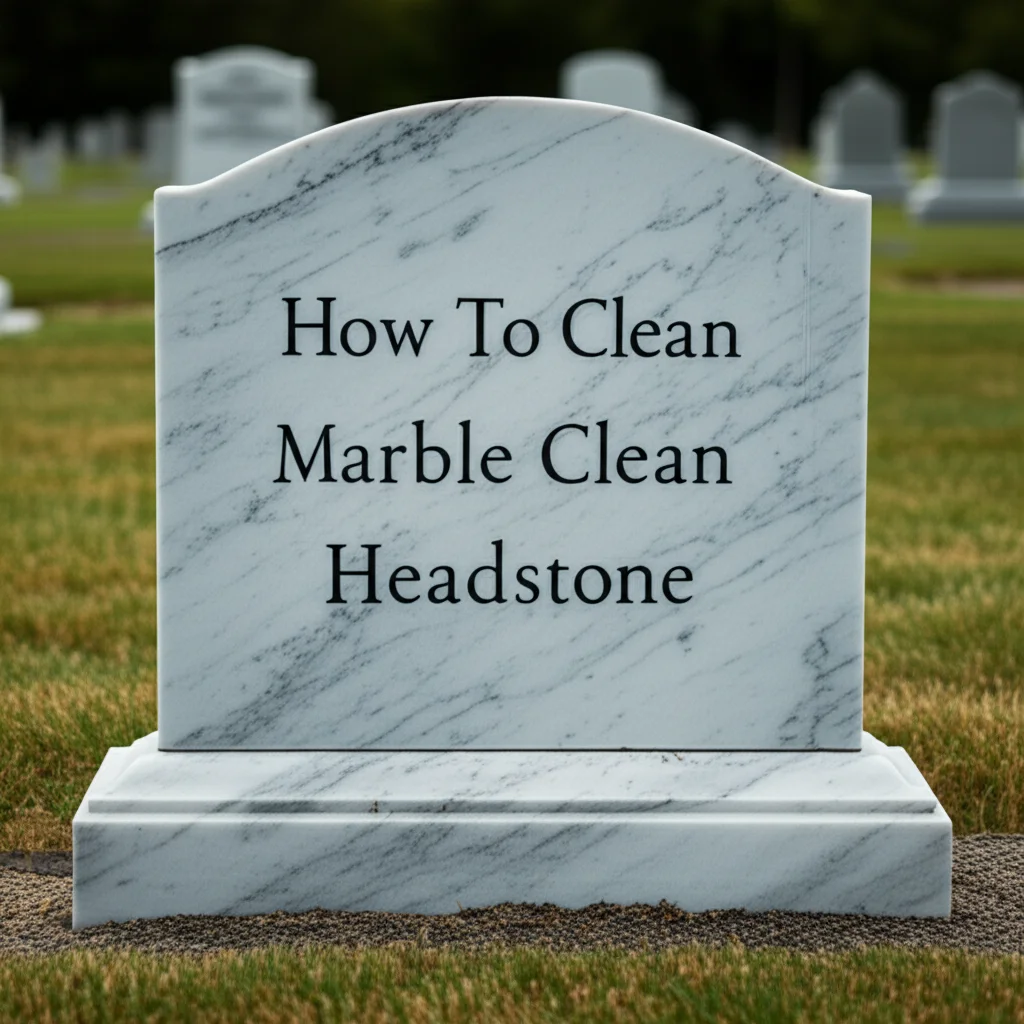· Todd Martin · Cleaning · 23 min read
How To Spot Clean A Mattress

Spot Clean A Mattress: Your Ultimate Guide
Imagine relaxing on a truly clean bed. Your mattress plays a big role in this feeling. We spend countless hours sleeping on it, yet many of us overlook its cleanliness. This often leads to hidden dirt and stains.
Fortunately, you can maintain a fresh sleeping environment. Knowing how to spot clean a mattress is a simple skill everyone should master. This article helps you tackle spills and blemishes quickly. I will share easy-to-follow steps and practical tips for various common mattress stains. We will also look at essential tools and methods for different mattress types. Get ready to bring a new level of freshness to your sleep space.
Takeaway
- Act quickly when a spill occurs on your mattress.
- Gather the right tools and cleaning agents for the specific stain type.
- Blot, do not rub, to remove stains effectively from your mattress.
- Always test cleaning solutions on a hidden area first.
- Ensure your mattress dries completely to prevent mold.
To spot clean a mattress, you need to identify the stain type, gather appropriate cleaning supplies like mild detergent or natural solutions (baking soda, vinegar), and gently blot the affected area. Avoid oversaturating the mattress, and allow it to air dry fully to prevent moisture issues and unpleasant odors.
Why Spot Cleaning Your Mattress Is Essential
Maintaining a clean mattress is vital for your health and comfort. A dirty mattress can harbor allergens and dust mites. It can also develop unpleasant odors over time. Regular spot cleaning addresses these issues promptly.
Spot cleaning means you only treat specific areas with stains or spills. This differs from a full deep clean. It helps you keep the mattress fresh between professional cleanings. This quick response also prevents small issues from becoming big problems. Catching a stain early makes it much easier to remove.
Benefits of Quick Spot Cleaning
Acting fast offers several advantages. Fresh stains are always easier to remove than old ones. Quick action prevents the stain from setting deep into the mattress fibers. This preserves the mattress’s appearance and hygiene. It also stops odors from lingering in your bedroom.
Proper spot cleaning extends your mattress’s lifespan. It prevents moisture damage and material breakdown from neglected spills. This practice ensures your sleeping surface remains a healthy and inviting place for rest. Regular care also saves you money by delaying the need for a full mattress replacement.
Essential Tools and Supplies for Mattress Spot Cleaning
Before you start cleaning your mattress, gather all the necessary items. Having everything ready saves time and makes the process smoother. The right tools help you achieve the best results. They also protect your mattress from damage.
You do not need many specialized tools. Most items are likely already in your home. This makes mattress spot cleaning accessible to everyone. Here is a list of what I recommend having on hand.
Must-Have Cleaning Supplies
- Clean Cloths or Microfiber Towels: You need several of these. Use them for blotting and applying solutions. White cloths are best to avoid color transfer.
- Spray Bottle: This is useful for applying cleaning solutions evenly. It prevents oversaturation of the mattress material.
- Vacuum Cleaner with Upholstery Attachment: This removes loose dirt and dust. It prepares the area before wet cleaning.
- Mild Laundry Detergent: Choose a gentle, colorless liquid detergent. Mix it with water for a basic cleaning solution.
- Baking Soda: This is excellent for absorbing odors and moisture. It also helps lift fresh stains.
- White Vinegar: Distilled white vinegar is a natural deodorizer and disinfectant. It works well on many organic stains.
- Hydrogen Peroxide (3%): This is effective for blood stains. It also helps with some yellowing. Use with caution on colored mattresses as it can bleach.
- Enzyme Cleaner: These cleaners break down organic matter. They are especially good for biological stains like urine or vomit.
- Gloves: Protect your hands from cleaning solutions.
- Fan or Hair Dryer: These speed up drying time. Proper drying prevents mold and mildew growth.
Having these supplies ready will prepare you for almost any mattress stain. Always remember to test any cleaning solution on a small, hidden area first. This prevents potential damage or discoloration to your mattress fabric.
General Steps to Spot Clean Any Mattress
Spot cleaning a mattress follows a few simple, universal steps. These steps apply to most spills and stains. Remember, speed is your friend when it comes to stain removal. The sooner you act, the better your chances of success.
I will walk you through the basic process. This method forms the foundation for tackling specific stain types. You can adapt it slightly based on the stain.
Step-by-Step Mattress Stain Removal
- Prepare the Area: First, remove all bedding, including sheets and mattress protectors. If the stain is wet, use a clean cloth to absorb as much liquid as possible. Blot, do not rub, to prevent pushing the stain deeper.
- Vacuum the Mattress: Use your vacuum cleaner’s upholstery attachment. Go over the stained area and surrounding fabric. This removes loose dirt, dust, and debris. This step prepares the surface for wet cleaning.
- Choose Your Cleaning Solution: Select a solution appropriate for the stain type. For general grime, a mix of mild detergent and water works. For tougher stains like urine or vomit, an enzyme cleaner is better. I will discuss specific solutions for common stains later.
- Test the Solution: Apply a small amount of your chosen cleaning solution to an inconspicuous part of the mattress. An ideal spot is usually under the mattress or on a corner that is not visible. Wait a few minutes to check for any discoloration or adverse reactions. This step is crucial to prevent damage.
- Apply and Blot the Stain: Lightly dampen a clean cloth with the cleaning solution. Start from the outside edges of the stain and work your way inward. This prevents the stain from spreading. Gently blot the stain repeatedly. Do not rub, as rubbing can set the stain further or damage the fabric. Continue blotting with a fresh, clean part of the cloth until the stain lifts. You may need to reapply solution and blot several times.
- Rinse (Blot with Water): Once the stain is gone, dampen another clean cloth with plain water. Blot the treated area to rinse away any cleaning solution residue. This prevents residue buildup that could attract dirt or cause skin irritation. Repeat this step until no suds or stickiness remain.
- Dry Thoroughly: This is one of the most critical steps. Proper drying prevents mold and mildew. Press dry towels firmly onto the damp area to absorb excess moisture. You can use a fan, open windows, or a hair dryer on a cool setting to speed up drying. Ensure the area is completely dry before putting sheets back on. Leaving moisture can lead to a bigger problem.
Remember, patience is key when spot cleaning. Some stains require multiple attempts. For more stubborn stains, you might need to try different methods or specialized cleaners. You can find more general guidance on cleaning various mattress stains at how to clean stains from a mattress.
Tackling Common Mattress Stains: A Detailed Guide
Mattresses face many types of spills and accidents. Each stain type sometimes needs a slightly different approach. Knowing the specific treatment for common culprits makes spot cleaning much more effective. I will cover the most frequent offenders you might encounter.
Remember, the general steps of preparing, vacuuming, testing, applying, blotting, rinsing, and drying still apply. These specific methods simply suggest the best cleaning solutions for each stain. Always prioritize quick action for best results.
How to Clean Urine Stains
Urine stains are common, especially in homes with children or pets. They leave both a stain and a strong odor. Addressing them quickly is crucial to prevent the smell from setting.
First, absorb as much liquid as possible using old towels or paper towels. Press down firmly to draw moisture out of the mattress. Next, mix equal parts white vinegar and water in a spray bottle. Spray the solution onto the affected area, saturating it without drenching the mattress. Let it sit for 5-10 minutes. Then, blot the area thoroughly with a clean, dry cloth.
After blotting, sprinkle a generous amount of baking soda over the damp spot. The baking soda will absorb remaining moisture and odors. Let it sit for several hours, or even overnight, if the stain is stubborn. Finally, vacuum up the dry baking soda. For persistent urine odors, you might need to use a dedicated enzyme cleaner. You can learn more about tackling these specific stains at how to clean urine from a mattress. For those specific to pet accidents, more information is at how to clean cat pee out of mattress.
Removing Blood Stains
Blood stains can look daunting, but they are often removable if treated promptly. Cold water is your best friend here. Never use hot water, as it can set the blood stain permanently.
Start by blotting fresh blood with a cloth dampened with cold water. Continue blotting until no more blood transfers to the cloth. For more stubborn or dried blood stains, mix 1 teaspoon of mild laundry detergent with 1 cup of cold water. Alternatively, you can use a solution of 3% hydrogen peroxide. Apply a small amount to the stain using a clean cloth. Blot gently, working from the outside in. Repeat this process until the stain fades.
Once the blood stain is gone, blot the area with a cloth dampened with plain cold water to rinse. Then, use a dry towel to absorb excess moisture. Ensure the mattress dries completely before use. Hydrogen peroxide can bleach colored fabrics, so test it first.
Erasing Sweat and Body Oil Stains
Over time, sweat and body oils can leave yellow stains on your mattress. These are common, especially in areas where you sleep most. While they may not seem as urgent as a spill, addressing them improves mattress hygiene.
First, lightly dampen the stained area with a cloth. Then, create a paste using baking soda and a small amount of water. Apply this paste directly onto the yellow stain. Allow the paste to sit for at least 30 minutes, or even a few hours for older stains. The baking soda helps absorb oils and lifts the discoloration.
After the paste dries, vacuum up the residue thoroughly. If stains persist, you can try blotting the area with a solution of hydrogen peroxide and water. Remember to test this solution first on an unseen area. Ensure the mattress is completely dry afterwards. More details on treating these specific discolorations can be found at how to clean yellow stains from mattress.
Dealing with Food and Drink Spills
Accidental food or drink spills are a common occurrence. The method for cleaning them depends on what was spilled. Act immediately to prevent the stain from setting.
For liquid spills like coffee or juice, blot up as much liquid as possible with a clean, dry cloth. Then, mix a few drops of mild dish soap with warm water. Dampen a cloth with this soapy solution. Blot the stained area gently, working from the edges inward. Continue blotting with clean sections of the cloth until the stain lifts. For solid food items, scrape off any excess before proceeding.
For grease stains, sprinkle cornstarch or baking soda over the area to absorb the oil. Let it sit for 15-30 minutes, then vacuum it up. Follow with a mild detergent solution. After treating the stain, blot the area with a clean, water-dampened cloth to rinse. Ensure proper drying afterwards.
Natural Cleaning Solutions for Your Mattress
Many commercial mattress cleaners contain harsh chemicals. These can irritate skin or leave unwanted residues. Fortunately, several effective natural cleaning solutions exist. They are safe, environmentally friendly, and often just as powerful.
I prefer natural options whenever possible. They are gentle on your mattress and safer for your family. Here are some of my go-to natural remedies for spot cleaning. These solutions harness the power of common household ingredients.
Baking Soda: The Odor Absorber
Baking soda is a miracle worker for mattress cleaning. It absorbs moisture, neutralizes odors, and helps lift light stains. It is my first choice for refreshing a mattress.
To use baking soda, simply sprinkle a generous layer over the stained or odorous area. For best results, let it sit for several hours, or even overnight. This allows it ample time to absorb odors and moisture. Afterwards, simply vacuum up the baking soda thoroughly. This leaves your mattress smelling fresh and dry. You can find more techniques using this powerful ingredient at how to clean stains off mattress with baking soda.
White Vinegar: The Disinfectant and Stain Fighter
White vinegar is another versatile natural cleaner. Its acidic nature helps break down many organic stains and acts as a natural disinfectant. It also helps neutralize odors.
Mix equal parts white vinegar and water in a spray bottle. Lightly spray the stained area. Do not oversaturate the mattress. Let it sit for 10-15 minutes, then blot thoroughly with a clean cloth. The vinegar smell will dissipate as it dries. This solution is especially useful for urine stains.
Hydrogen Peroxide (3%): The Bleach Alternative
Hydrogen peroxide is a mild bleaching agent. It is excellent for sanitizing and removing tough stains like blood or yellowing. Use the standard 3% solution found in drugstores.
Apply a small amount directly to the stain using a clean cloth or cotton ball. You might see some bubbling, which indicates it is working. Let it sit for a few minutes, then blot with a clean, damp cloth to rinse. Always test hydrogen peroxide on an inconspicuous spot first, especially on colored mattresses, as it can cause discoloration.
These natural solutions offer effective and safe alternatives for keeping your mattress clean and fresh. They are often all you need for successful spot cleaning.
Caring for Different Mattress Types During Spot Cleaning
Mattresses come in various materials, each with unique cleaning considerations. What works well on an innerspring mattress might harm a memory foam one. Understanding these differences is key to preventing damage during spot cleaning.
I always advise checking your mattress manufacturer’s specific cleaning recommendations first. If not available, these general guidelines will help. Treating your mattress type correctly ensures its longevity and performance.
Spot Cleaning Memory Foam Mattresses
Memory foam mattresses are sensitive to moisture. Too much liquid can damage the foam structure and lead to mold. Therefore, very light application of cleaning solutions is crucial.
Use a spray bottle to lightly mist the stained area. Avoid pouring or drenching the foam directly. For most stains, a mild solution of water and gentle detergent is sufficient. For tougher spots, a diluted enzyme cleaner works well. Blot the stain gently with a clean cloth. Never rub. After cleaning, press dry towels firmly into the foam to absorb as much moisture as possible. Use a fan or hair dryer on a cool setting to ensure thorough drying. For comprehensive guidance on cleaning this specific material, you can refer to how to clean memory foam mattress or how to clean foam mattress.
Spot Cleaning Innerspring Mattresses
Innerspring mattresses are more forgiving with moisture than foam. However, too much water can still lead to rust in the springs or mold growth. The general spot cleaning steps apply well here.
You can use slightly more liquid with these mattresses than with foam. A mix of mild detergent and water, or a vinegar solution, is effective for most stains. Apply with a spray bottle or a damp cloth. Blot the stain thoroughly, pressing firmly to work the solution into the fabric. Rinse by blotting with a clean, water-dampened cloth. Ensure you extract as much moisture as possible using dry towels. Good airflow is essential for complete drying.
Spot Cleaning Pillow-Top Mattresses
Pillow-top mattresses have an extra layer of padding. This plush layer adds comfort but can also hold moisture more easily. This requires careful drying.
When spot cleaning a pillow-top, focus on the surface layer. Avoid letting moisture seep too deep into the padding. Use the least amount of cleaning solution necessary. Blot thoroughly and repeatedly to lift the stain. After cleaning, press down firmly with dry towels to absorb maximum moisture. Air circulation is particularly important for pillow-tops. Position a fan directly on the cleaned area for several hours, or until completely dry. For more specific advice on this mattress type, check out how to clean pillow-top mattress.
Spot Cleaning Hybrid Mattresses
Hybrid mattresses combine springs and foam layers. This means you need to be mindful of both materials. Treat the surface based on its composition, usually a fabric cover over foam.
Apply cleaning solutions sparingly, similar to memory foam. Blot gently, focusing on the surface stain. Avoid deep saturation. Ensure all layers dry completely. Good ventilation is vital for these multi-layered mattresses.
Always remember that proper drying is the most crucial step for any mattress type. Neglecting this can lead to far greater problems than the original stain.
Drying Your Mattress After Spot Cleaning: Crucial Steps
Successfully removing a stain is only half the battle. Properly drying your mattress afterwards is equally, if not more, important. Moisture left in the mattress can lead to severe problems. These include mold, mildew, and unpleasant musty odors.
Mold not only damages your mattress but also poses health risks. It can trigger allergies and respiratory issues. I always emphasize thorough drying to my clients. Taking extra time at this stage prevents future headaches.
Effective Mattress Drying Techniques
- Absorb Excess Moisture: Immediately after cleaning, press several clean, dry towels firmly onto the damp area. Walk on the towels or apply body weight to maximize absorption. Repeat this step with fresh, dry towels until no more moisture transfers. This mechanical removal is the first and most critical step.
- Increase Air Circulation: Open windows in the room to create a cross-breeze. This helps evaporate moisture naturally. If possible, remove the mattress from the bed frame and lean it against a wall. This exposes more surface area to the air.
- Use Fans: Position one or more fans to blow directly onto the cleaned area. A strong fan can significantly speed up drying time. Keep the fans running for several hours, or even overnight, depending on the amount of moisture.
- Dehumidifier: If you live in a humid climate or the stain was large, a dehumidifier can be invaluable. Place it in the room near the mattress. It pulls moisture from the air, assisting the drying process.
- Hair Dryer on Cool Setting: For small, lightly damp areas, you can use a hair dryer. Set it to the cool or low-heat setting. Keep the dryer moving constantly to avoid overheating any one spot. High heat can damage some mattress materials, especially foam.
- Sunlight (Use with Caution): Direct sunlight can help kill bacteria and dry mattresses. If you can safely move your mattress outside, choose a sunny, dry day. However, prolonged exposure to direct sunlight can degrade some mattress materials and fade fabrics. Use this method sparingly and for short periods.
- Check for Dryness: Before putting sheets back on, thoroughly check the cleaned area. Press your hand firmly onto it. It should feel completely dry to the touch. Any lingering dampness means you need to continue the drying process. If in doubt, give it more time.
Rushing the drying process is a common mistake. It can lead to long-term problems that are much harder to fix than the initial stain. Patience here pays off immensely.
Preventative Measures: Keeping Your Mattress Clean Long-Term
While spot cleaning is essential for accidents, preventing stains is even better. A proactive approach saves you time and effort. It also keeps your mattress looking and feeling fresh for longer. Implementing a few simple habits can significantly reduce the need for intensive cleaning.
I always recommend these preventative steps to safeguard your investment. A clean mattress supports better sleep and overall hygiene. Make these tips part of your regular home maintenance routine.
Strategies for Mattress Protection
- Invest in a Quality Mattress Protector: This is my number one recommendation. A good waterproof mattress protector creates a barrier against spills, sweat, allergens, and dust mites. It is much easier to wash a protector than to clean the mattress itself. Look for one that is breathable yet liquid-proof. For specific advice on keeping this protective layer clean, refer to how to clean mattress protector.
- Avoid Eating and Drinking in Bed: This seems obvious, but many spills happen during late-night snacks or morning coffee. Designate your bed for sleeping and relaxing. Keep food and drinks away to minimize accident risks.
- Change and Wash Bedding Regularly: Changing sheets and pillowcases weekly or bi-weekly removes sweat, body oils, and skin cells. This reduces the buildup that can penetrate your mattress over time. Regular washing also keeps dust mites at bay.
- Vacuum Your Mattress Periodically: Even with a protector, dust and allergens can accumulate on the mattress surface. Use your vacuum’s upholstery attachment to go over the entire mattress every 1-3 months. This helps remove surface dirt and dust mites.
- Address Spills Immediately: Accidents happen. When they do, act quickly. The faster you respond to a spill, the easier it is to remove the stain. Have your spot cleaning supplies ready for quick action.
- Deodorize Regularly: Even without visible stains, mattresses can absorb odors. Sprinkle baking soda over the entire mattress every few months. Let it sit for several hours, then vacuum it up. This helps absorb any lingering smells and refreshes the mattress.
- Allow Airflow: Once a month, strip your bed completely. Let the mattress air out for a few hours. This allows any trapped moisture to evaporate, preventing mildew growth. Good ventilation is key to mattress health.
By following these preventative measures, you can drastically reduce the frequency and severity of mattress stains. This keeps your sleeping environment clean, healthy, and inviting.
When to Call the Professionals: Knowing Your Limits
While spot cleaning is effective for most everyday accidents, some situations require expert help. Knowing when to call a professional mattress cleaner can save your mattress from irreversible damage. It also ensures the job gets done thoroughly and safely.
I always advise homeowners to assess the situation before attempting aggressive DIY solutions. Sometimes, the scale of the problem is simply too big for home methods. Trusting experts is a smart choice in these instances.
Signs It’s Time for Professional Help
- Large or Deep Stains: A small coffee spill is one thing, but a large, deep-set stain from a major spill might be beyond your capabilities. Professionals have specialized equipment and stronger solutions to penetrate deep into the mattress without oversaturating it. They can extract more moisture than you can with towels.
- Multiple or Widespread Stains: If your mattress has accumulated numerous stains over time, individual spot cleaning might not be enough. A professional deep clean can address all these issues simultaneously. This restores a uniform clean appearance.
- Persistent Odors: Some odors, especially from old urine or vomit stains, can be incredibly difficult to remove entirely. Even after cleaning the visible stain, the smell might linger. Professional cleaners use powerful enzyme treatments and deodorizers designed to break down odor-causing molecules.
- Mold or Mildew Growth: If you notice signs of mold or mildew on your mattress, it is critical to call professionals immediately. Mold spores can spread quickly and pose serious health risks. Professionals have the tools and expertise to safely remove mold without spreading spores further. They also ensure the mattress is completely dry afterwards. You can find more specific information on dealing with this serious issue at how to clean mold off mattress.
- Unknown or Stubborn Stains: If you are unsure what caused a stain, or if a stain simply will not budge despite your best efforts, professional help is warranted. They can identify the stain type and apply the most effective treatment. They also know which chemicals are safe for your specific mattress material.
- Allergy Issues: If you or a family member experiences increased allergies despite regular cleaning, a professional deep clean can help. They use powerful vacuum systems and cleaning methods to extract dust mites, allergens, and pet dander embedded deep within the mattress.
Professional cleaning services offer peace of mind. They extend your mattress’s life and ensure a truly hygienic sleeping environment. Do not hesitate to call them when the task feels overwhelming.
FAQ Section
How often should I spot clean my mattress?
You should spot clean your mattress immediately whenever a spill or accident occurs. Prompt action significantly increases the chances of complete stain removal. For general maintenance and minor marks, spot clean as needed, typically every few months during regular bedding changes. This keeps your sleeping surface fresh and hygienic.
Can I use a steam cleaner on my mattress?
Using a steam cleaner on a mattress is generally not recommended, especially for memory foam or pillow-top mattresses. Steam introduces a lot of moisture and can penetrate deep into the mattress layers. This makes thorough drying very difficult and significantly increases the risk of mold and mildew growth. Stick to dry cleaning methods or very minimal damp applications.
What is the best solution for old, set-in mattress stains?
For old, set-in mattress stains, a stronger enzyme-based cleaner is often the most effective solution. These cleaners break down organic matter that causes stains and odors. Apply according to product directions, allow it to penetrate, and blot repeatedly. You may also try a baking soda paste overnight. Multiple applications might be necessary.
How long does a mattress take to dry after spot cleaning?
Drying time for a mattress after spot cleaning varies based on the amount of liquid used, humidity, and airflow. Small, lightly damp spots might dry in a few hours. Larger or more saturated areas can take 12-24 hours or even longer. Always ensure complete dryness by using fans and good ventilation to prevent mold and mildew.
Is it safe to use hydrogen peroxide on a colored mattress?
Using hydrogen peroxide on a colored mattress is generally not recommended without caution. Hydrogen peroxide is a mild bleaching agent. It can cause discoloration or lighten the fabric color on some materials. Always test a small amount of 3% hydrogen peroxide solution on an inconspicuous area first. Allow it to dry completely to check for any adverse effects before proceeding.
Can I use dish soap to spot clean my mattress?
Yes, you can use a small amount of mild, clear dish soap diluted in water to spot clean many mattress stains. Mix a few drops of dish soap with warm water in a spray bottle or bowl. Dampen a clean cloth with this solution and gently blot the stain. Avoid using colored dish soaps, which can transfer dye to your mattress.
Conclusion
Keeping your mattress clean is a simple yet impactful way to enhance your sleep environment. Learning how to spot clean a mattress effectively empowers you to handle spills and stains with confidence. We have covered everything from essential tools to specific stain treatments and crucial drying techniques. Remember that acting fast is paramount. The quicker you address a spill, the easier it is to remove.
Beyond immediate stain removal, integrating preventative measures will save you time and effort in the long run. A quality mattress protector and regular vacuuming are your best defenses. By following these guidelines, you extend your mattress’s life. You also ensure a hygienic and inviting space for rest. Take pride in your clean sleeping sanctuary; your well-being will thank you. Start your journey to a fresher





